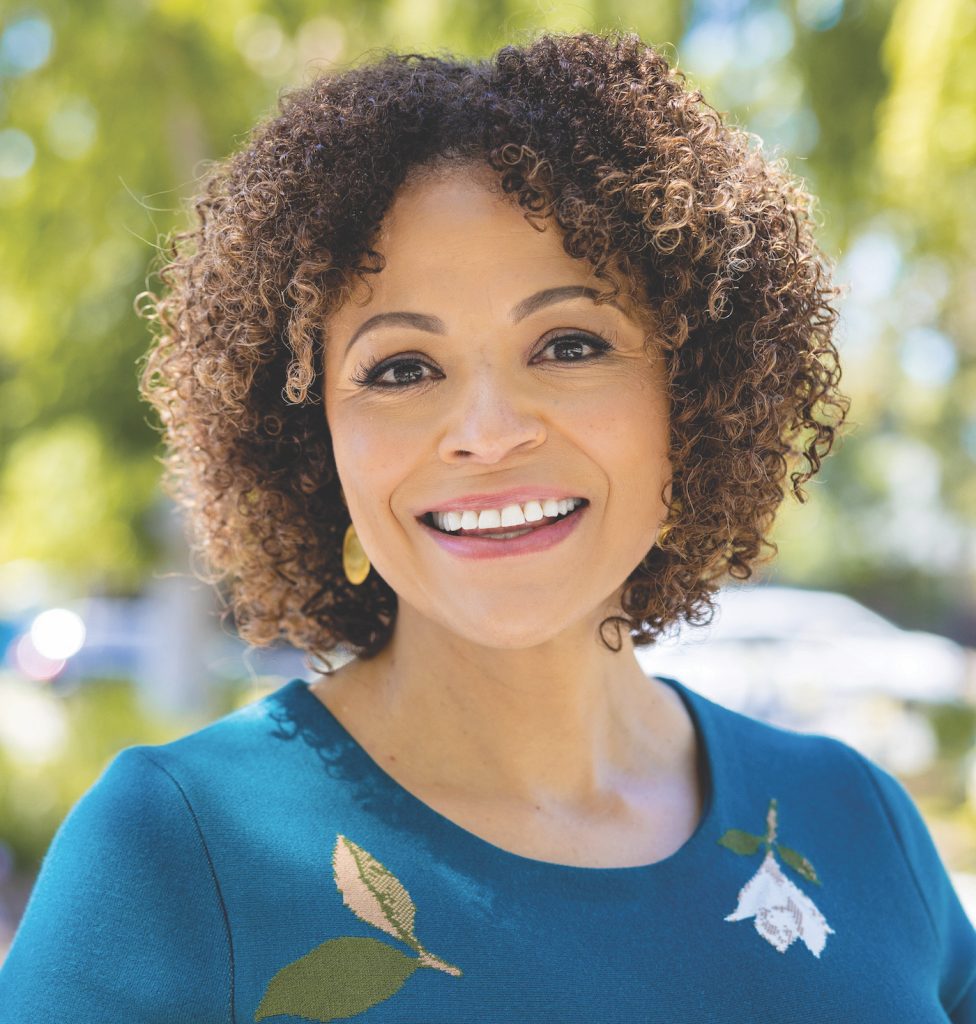Lifting up the Region that Gave Her So Much

Nicole Taylor’s passion for “power-building” and lifting up those living on the margins has its inspirational roots 350 miles south in Los Feliz, Los Angeles, where her Jamaican immigrant mother’s spirit of giving and of service was, according to Taylor, unparalleled. “She just continuously gave to others and expected me to do the same. Even though we didn’t have literally anything to give, I was always expected to help.”
Despite being raised in Los Angeles, Taylor, CEO of the Silicon Valley Community Foundation, the largest community foundation in the nation, feels a deep debt of gratitude to her adopted region.
“I went to Stanford, and I was fortunate to have a full scholarship. It was a place that transformed my life and opened so many doors for me. I wanted to come back to this region because it gave me so much,” Taylor said. “I was heartbroken when I saw what was happening in this valley, the inequity, and I wanted to be part of helping to change that.”
Taylor received both her M.A. in Education and A.B. in Human Biology from Stanford University and began her career as an educator in the Oakland public schools. Teaching is a profession Taylor considers “one of the most giving ever.” She’s also been an administrator at both Stanford and Arizona State University, working closely with students.
“I was an educator, and I’ve been working in philanthropy, and I’ve gone back and forth in my career with both. Every day I get to think about: how are we making our communities better? How are we making life better for those among us who are facing the most difficult circumstances? What am I doing to contribute to a region that can be more equitable and more hospitable to everybody who is here? And I do it with an amazing team of people, from the staff that I get to work with, to our board, to very generous donors and companies with whom we work.”
Formerly the head of the East Bay Community Foundation, Taylor believes strongly in the role foundations can play to help both seasoned and newer donors engage meaningfully in their community.
“Our role is to meet donors where they are and help illuminate ways and places they can give so they don’t have to figure it all out on their own. Many next-generation philanthropists are still running companies. Many are still very busy or starting young families… So, we come up with ways for them to engage in issues that they care about, in the communities where they’ve been making their wealth, where they’re living, where they’re raising their families. We provide them options to help them get in the game.”
Taylor points to early childhood development and affordable housing as her most passionate areas of focus, personally.
“I’ve been in education from early years through higher ed. Children need a solid beginning – those early years are absolutely the most critical and are the marker for how they will succeed in K-12 and what their career and their earnings trajectories are. Early education is about a human being’s development. Investing in early childhood development is a sector with the biggest return for our society and for our communities.”
As for housing, she notes that anyone living in the Bay Area is familiar with the scarcity and high costs of housing. “We have to think about how we actually get more people permanently housed and secure. If you don’t have a roof over your head, how can we expect you to do much else and to thrive? It’s about our common humanity!”
At the center of Silicon Valley Community Foundation’s community-focused work is what is known as power-building – building up people’s capacity to use their own power and to have control over their own futures and their own lives.
“We believe in investing in building community power and building up the leaders in communities so that they can identify effective solutions for themselves and for their communities. Investing in the organizations that are working on the ground to make that happen is what we believe will fundamentally change the trajectory of our communities. We listen to them: What are the solutions you’d like to see in your communities? And then we support them without a lot of strings tied to it.”
Trust-Based Philanthropy
This sort of “trust-based philanthropy” is a concept that is taking hold in philanthropic circles, and one that Taylor says she believes in 100%. “We believe that we are partners alongside the folks doing the work on the ground; that they know best what their communities need. We can provide guidance or information that we might learn from other communities and bring that to them.” But mostly, she says, SVCF’s approach is to help community and nonprofit leaders do the work and trust their process.
“When I talk to donors and they want to have strings attached or barriers in place, if you will, for their giving – for example, they want specific reports on the nonprofit’s work, or for them to achieve certain outcomes, or they want to prohibit their grant from going to an organization’s crucial overhead costs – I often ask them if when they invest in a company, they go to the CEO and say, ‘Here’s my money, but I only want it to go to this.’ ”
Taylor likens investments in nonprofits as similar to investments in for-profit companies. Once you have done the due diligence, you don’t micromanage your investment. The same should go for nonprofits.
“If you believe in them, they will use your money wisely,” Taylor says.
Overall, Taylor wants philanthropy-minded people off the sidelines and into the game – to embrace the power they have to bring about real change.
“The people who are going to be reading The Giving List, they have an extraordinary ability to get into the game and dig deep and be part of creating an even more vibrant region than we have now. Because it can’t really be vibrant if not all of us are thriving. And right now, we have a whole lot of people who aren’t thriving. People don’t know where to go to get help with their giving. It can be overwhelming to know where to start. But we are here. We have community foundations all around the Bay. Find your local community foundation. We are here to help make it easy and frictionless for people to give.”
